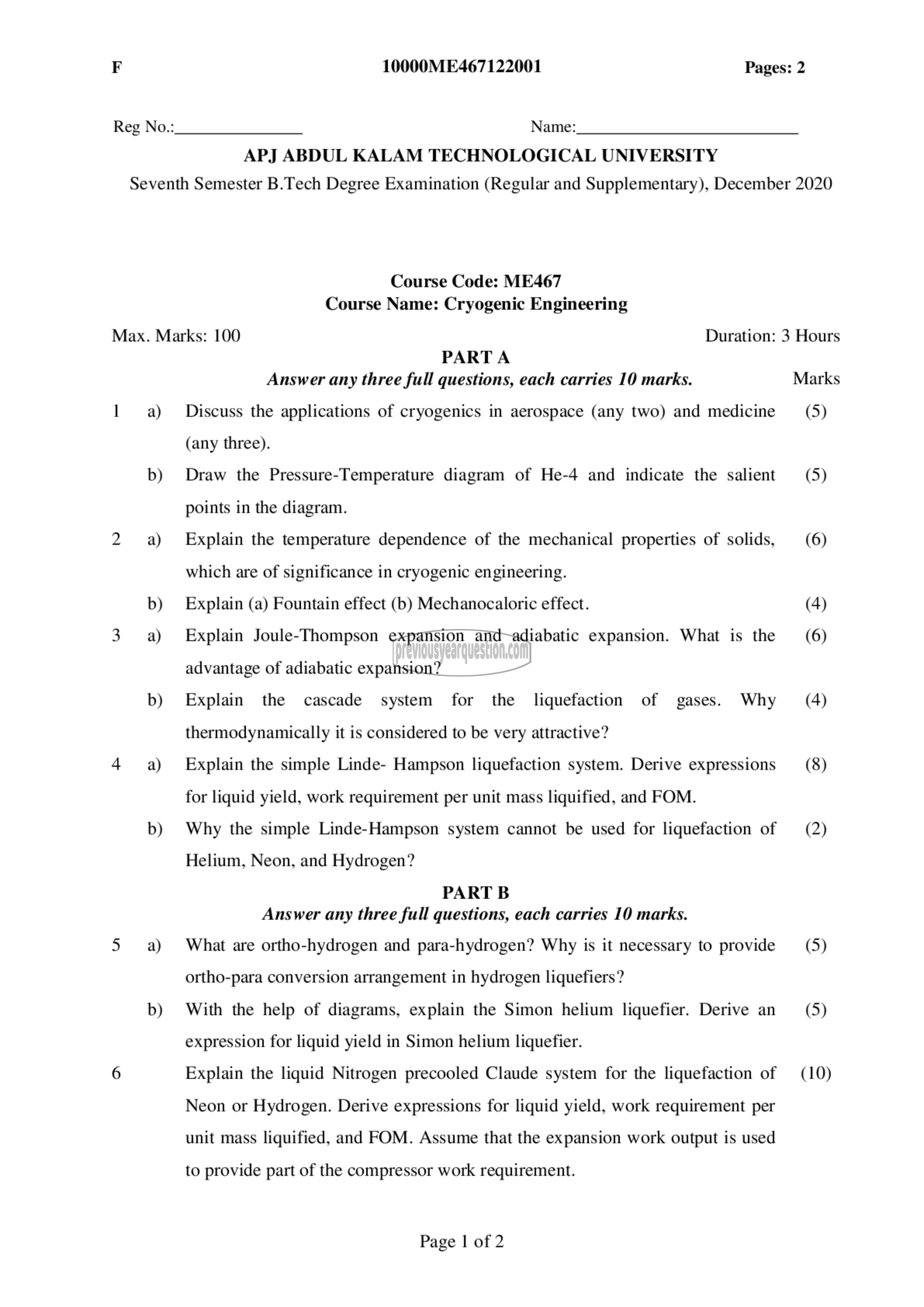APJ ABDUL KALAM TECHNOLOGICAL UNIVERSITY Previous Years Question Paper & Answer
Semester : SEMESTER 7
Subject : Cryogenic Engineering
Year : 2020
Term : DECEMBER
Branch : MECHANICAL ENGINEERING
Scheme : 2015 Full Time
Course Code : ME 467
Page:1
Reg No.:
10000ME467122001 Pages: 2
Name:
APJ ABDUL KALAM TECHNOLOGICAL UNIVERSITY
Seventh Semester B.Tech Degree Examination (Regular and Supplementary), December 2020
Max. Marks: 100
1a)
b)
2 ஐ
b)
3 a)
b)
4 ಬ
b)
5 9)
b)
6
Course Code: ME467
Course Name: Cryogenic Engineering
PARTA
Answer any three full questions, each carries 10 marks.
Discuss the applications of cryogenics in aerospace (any two) and medicine
(any three).
Draw the Pressure-Temperature diagram of He-4 and indicate the salient
points in the diagram.
Explain the temperature dependence of the mechanical properties of solids,
which are of significance in cryogenic engineering.
Explain (a) Fountain effect (b) Mechanocaloric effect.
Explain Joule-Thompson expansion and adiabatic expansion. What is the
advantage of adiabatic expansion?
Explain the cascade system for the liquefaction of gases. Why
thermodynamically it is considered to be very attractive?
Explain the simple Linde- Hampson liquefaction system. Derive expressions
for liquid yield, work requirement per unit mass liquified, and FOM.
Why the simple Linde-Hampson system cannot be used for liquefaction of
Helium, Neon, and Hydrogen?
PART B
Answer any three full questions, each carries 10 marks.
What are ortho-hydrogen and para-hydrogen? Why is it necessary to provide
ortho-para conversion arrangement in hydrogen liquefiers?
With the help of diagrams, explain the Simon helium liquefier. Derive an
expression for liquid yield in Simon helium liquefier.
Explain the liquid Nitrogen precooled Claude system for the liquefaction of
Neon or Hydrogen. Derive expressions for liquid yield, work requirement per
unit mass liquified, and FOM. Assume that the expansion work output is used
to provide part of the compressor work requirement.
Page | of 2
Duration: 3 Hours
Marks
(5)
(5)
(6)
(4)
(6)
(4)
(8)
(2)
(5)
(5)
(10)
